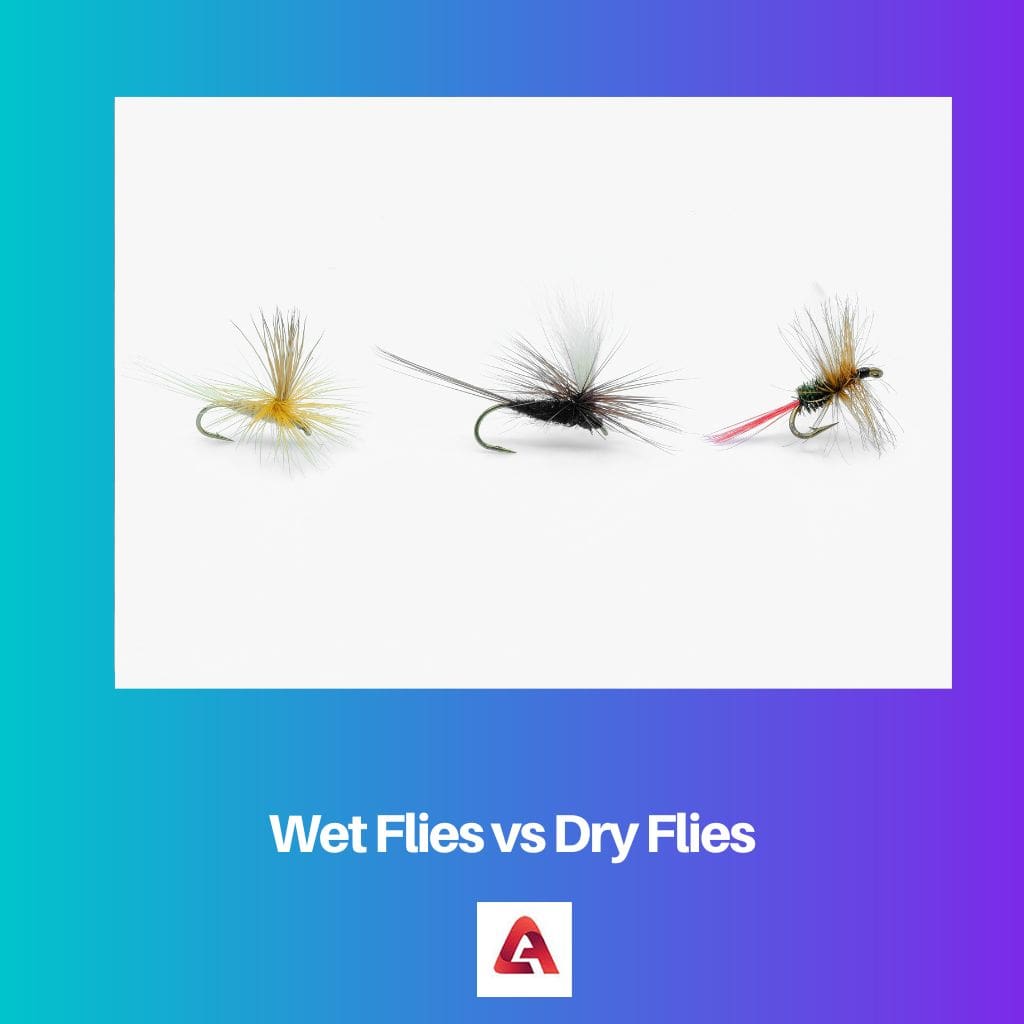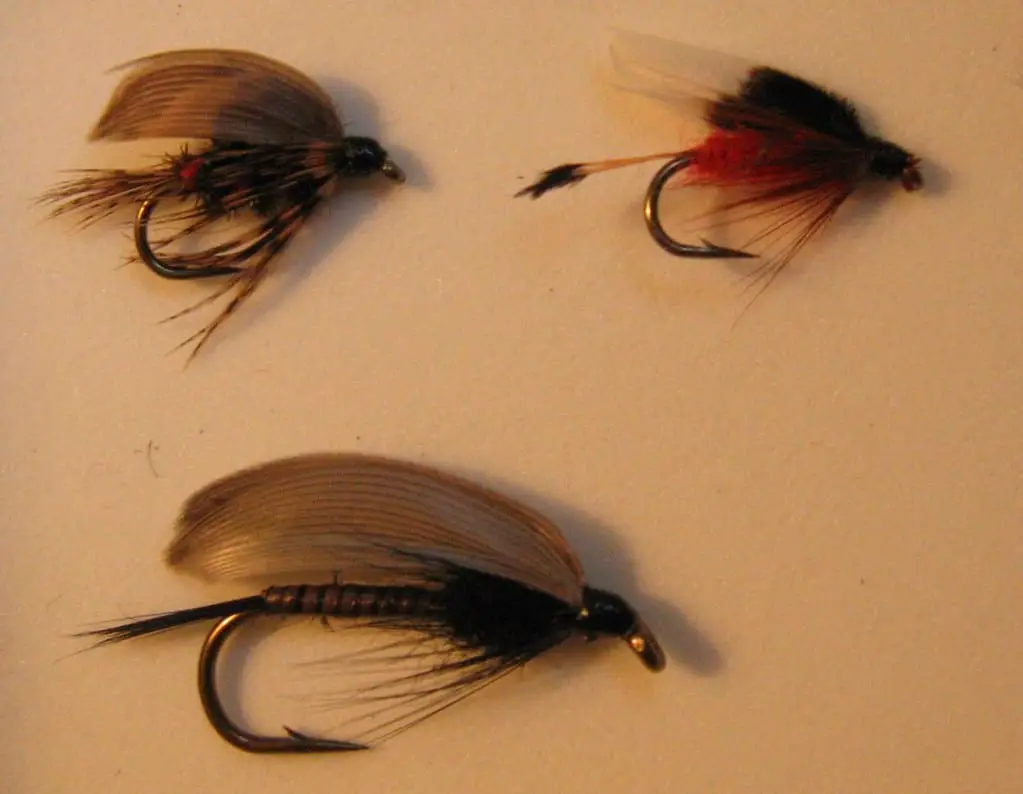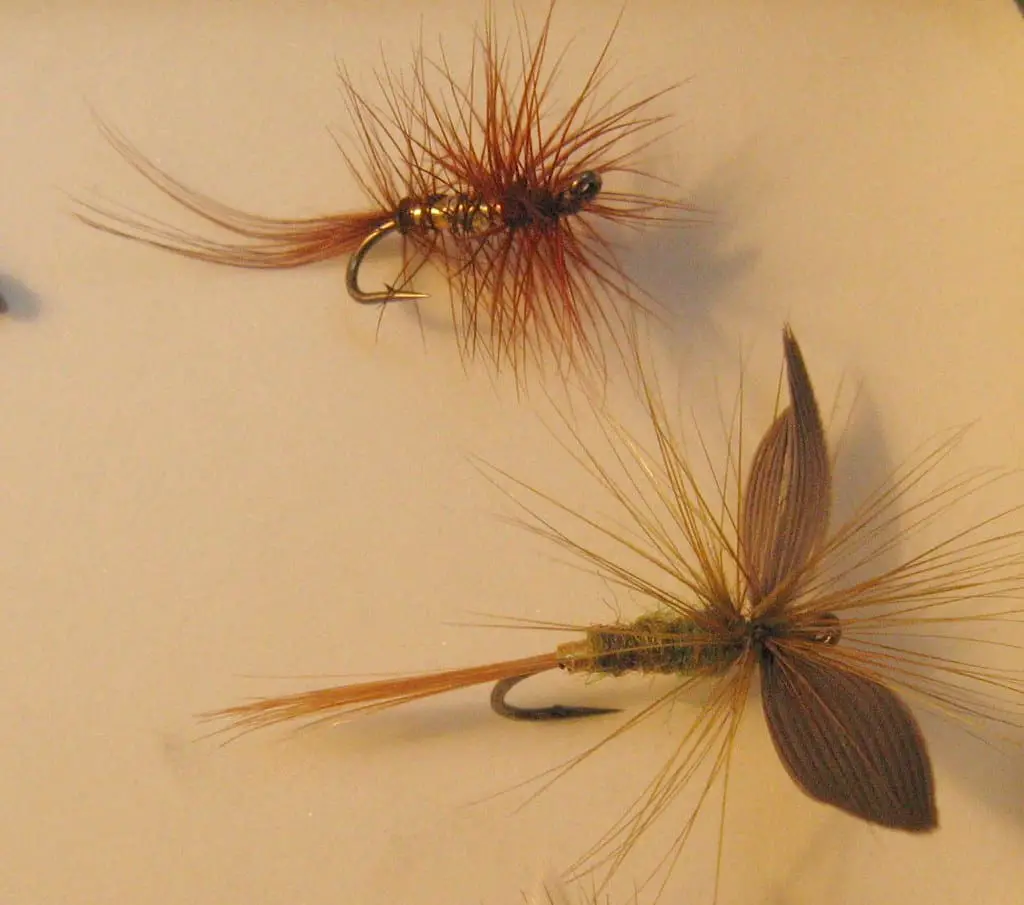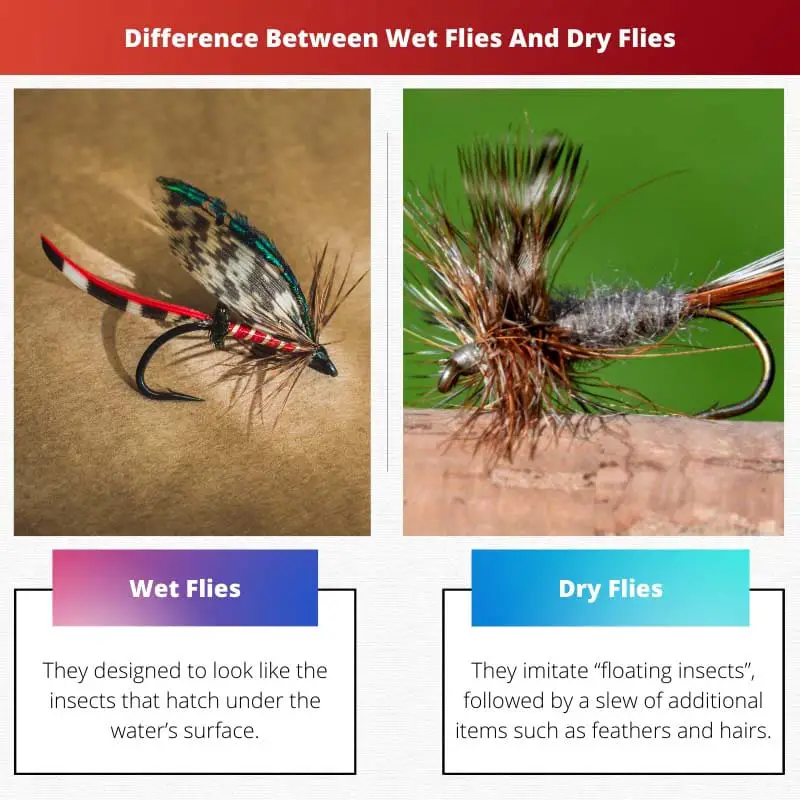When you first start fly fishing, selecting the perfect fly or bait can be daunting.
Like any other item, these basic components of fishing gear have particular specifications, advantages, and disadvantages.
In general, there are two sorts of flies to pick from. There are two types of flies here: wet flies and dry flies.
Key Takeaways
- Wet flies are designed to sink below the water’s surface to attract fish, while dry flies float on the surface to mimic insects.
- Wet flies effectively target fish that feed underwater, whereas dry flies attract fish that feed on the surface.
- Dry fly fishing requires careful presentation and technique, while wet fly fishing allows for more varied approaches and retrieves.
Wet Flies vs Dry Flies
Wet flies and dry flies are two types of artificial fishing lures. Wet flies are designed to sink below the water’s surface to attract fish, while dry flies are designed to float on the water’s surface.

Wet Flies are the ideal first fly to use. The approach is far more forgiving for beginners and takes less understanding and skill to produce a superb catch.
Wet fly grips are heavier, simpler to cast, and best used in deeper water.
Fish in greater depths are much less likely to be frightened by a fly dashing on the surface of the water and are more inclined to pursue the bait.
Dry Flies are more difficult for fishermen to cast and require a more skilled hand.
Dry fly fishing necessitates a thorough awareness of the varieties of bugs that fish are drawn to, making it even more difficult and suitable for more seasoned fishermen.
However, since dry flies float on the water’s surface, it might be simpler to determine whether or not a fish is interested in the bait.
Comparison Table
| Parameters of comparison | Wet Flies | Dry Flies |
|---|---|---|
| Design Distinction | They designed to look like the insects that hatch under the water’s surface | They imitate “floating insects”, followed by a slew of additional items such as feathers and hairs |
| Weight | They are weighted with gold bead heads accompanied by hefty metal | Dry flies are incredibly light |
| Size | Wet flies are the biggest flies | Dry flies are comparatively smaller |
| Angling location | Intended to be submerged underneath the fishing waterways | Hover on the water surface, attracting fish predators |
| Seasonal variation | Quite effective at any time of year | Flourish in the spring and summer months |
What are Wet Flies?
Wet flies are intended to be offered to fish beneath the water’s surface. Wet fly designs frequently feature a balanced element to help the fly sink in the water column.
This component is known as a “bead head.”
The bead acts as a weight, allowing the fly to delve deeper into the deep ocean.
When fishing deep or rapid water, it is frequently important to use a weighted fly or to fish with increased weight on your line to deliver your flies at the right depth.
In contrast, deep or sluggish water may necessitate the use of a wet fly without the need for a bead since the bead might startle the fish or cause the fly to sink too quickly.
Wet flies resemble bugs at various phases of development (nymphs and larvae), raw fish, crawfish, leech, tiny fish, and other small organisms that may entice a fish.
Wet flies are meant to skim as near to the base as feasible in certain circumstances, whereas others are deliberately crafted and displayed by the angler to sit a few millimetres underneath the surface.
Because wet flies are being used to catch fish that are eating below the surface, beginner and novice fly fishers choose them for their ease of usage.
Deeper water fishing frequently (but not always) needs less skill and ability since fish feel safer in the dark depths and are less likely to be scared by a deceptive movement or splashing water.

What are Dry Flies?
Dry flies are expected to sit on the ocean’s surface and imitate creatures that are rising to take flight or creatures that have fallen on the surface of the liquid.
Many dry flies are meant to seem like the adult form of wet flies, which may have been the larval or nymph stage of quasi-insects, whilst some dry flies are designed to look like damaged or imprisoned terrestrial insects (grasshopper, beetle, etc.).
Dry flies are light enough that they do not breach the surface tension of the water, and they may make minor waves to attract fish, but they disrupt the water less than wet flies.
Fishing with dry flies can be more difficult than fishing with wet flies, and mastering the appropriate processing route can be tedious for inexperienced or beginner fishermen.
Because one will be targeting fish eager to feed near the water surface, there’s frequently little room for error when fishing with dry flies.
Despite being more technically demanding, dry fly fishing may be more exhilarating than wet fly fishing since you can see all of the activity on the water’s surface.
Dry flies are created from a mixture of thread, feathers, and fur and have more minimalistic bodies and buoyant materials than wet flies.

Main Differences Between Wet Flies And Dry Flies
- Wet flies are designed to look like insects that hatch under the water’s surface. These flies can also be fashioned to seem like larger aquatic species. Dry flies, on the other hand, imitate “floating insects.” They are accompanied by a variety of other objects, such as feathers and hair.
- Wet flies are weighted with gold bead heads. They also have hefty metal wrapped around their hook to prevent them from sinking. Dry flies, on the other hand, are incredibly light, their wings or feathers provide them with wing-like appendages.
- The biggest flies are wet flies. The model’s smallest size in their extensive range is around a size 10. On the other hand, the largest of all dry flies is a size 12.
- Wet flies are intended to be submerged underneath the fishing waterways. They are utilized in fishing grounds where the fish prefer to eat underwater. Whereas Dry flies, hover on the water’s surface, attracting fish predators. They are perfect for surface feeder fishing sites.
- Wet flies are quite effective at any time of year. However, they are most common in the early seasons when nymphs hatch, but dry flies flourish in the spring and summer months once the water temperature rises.




